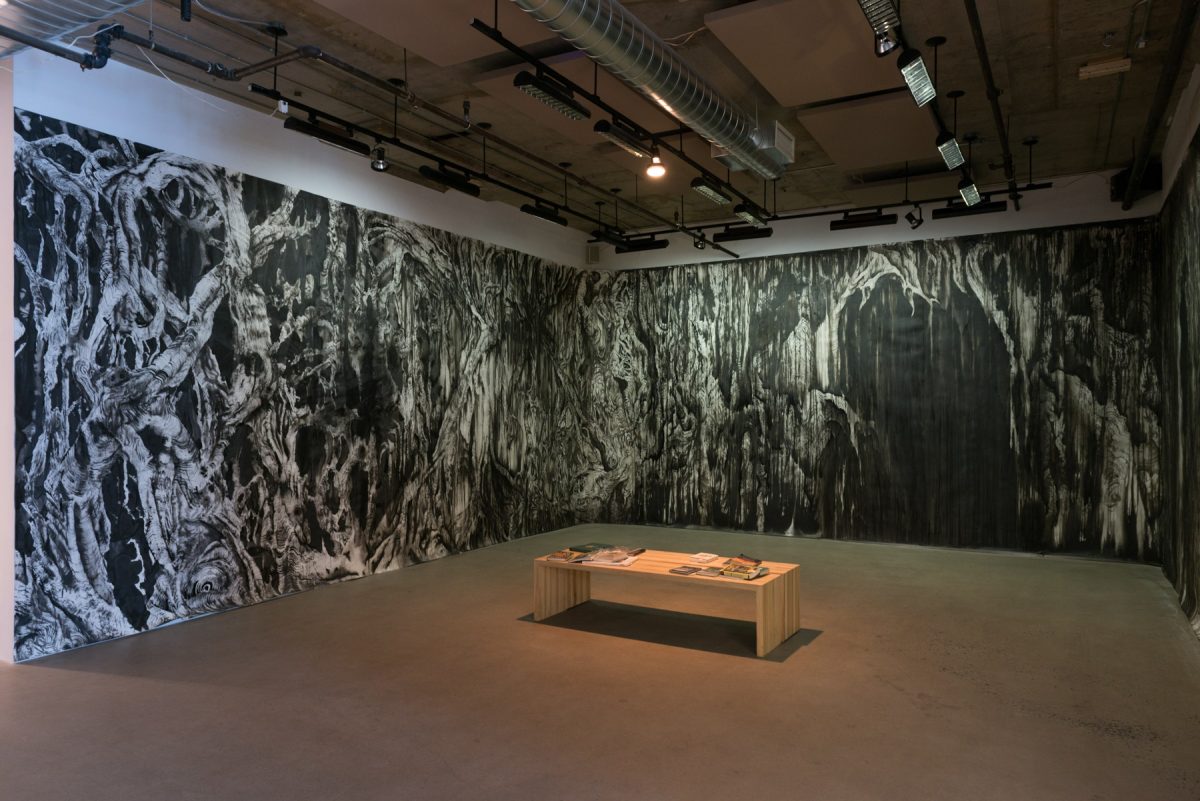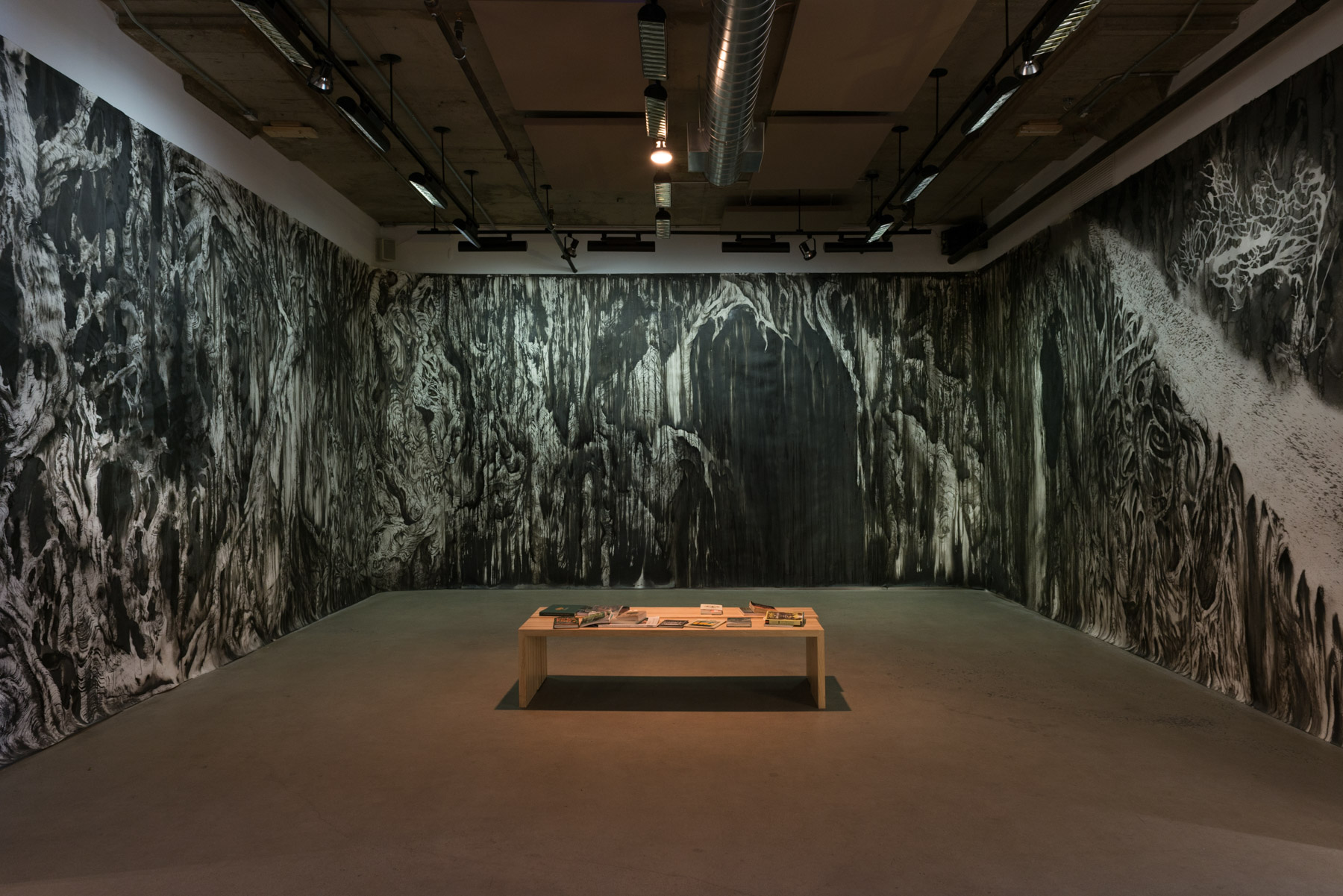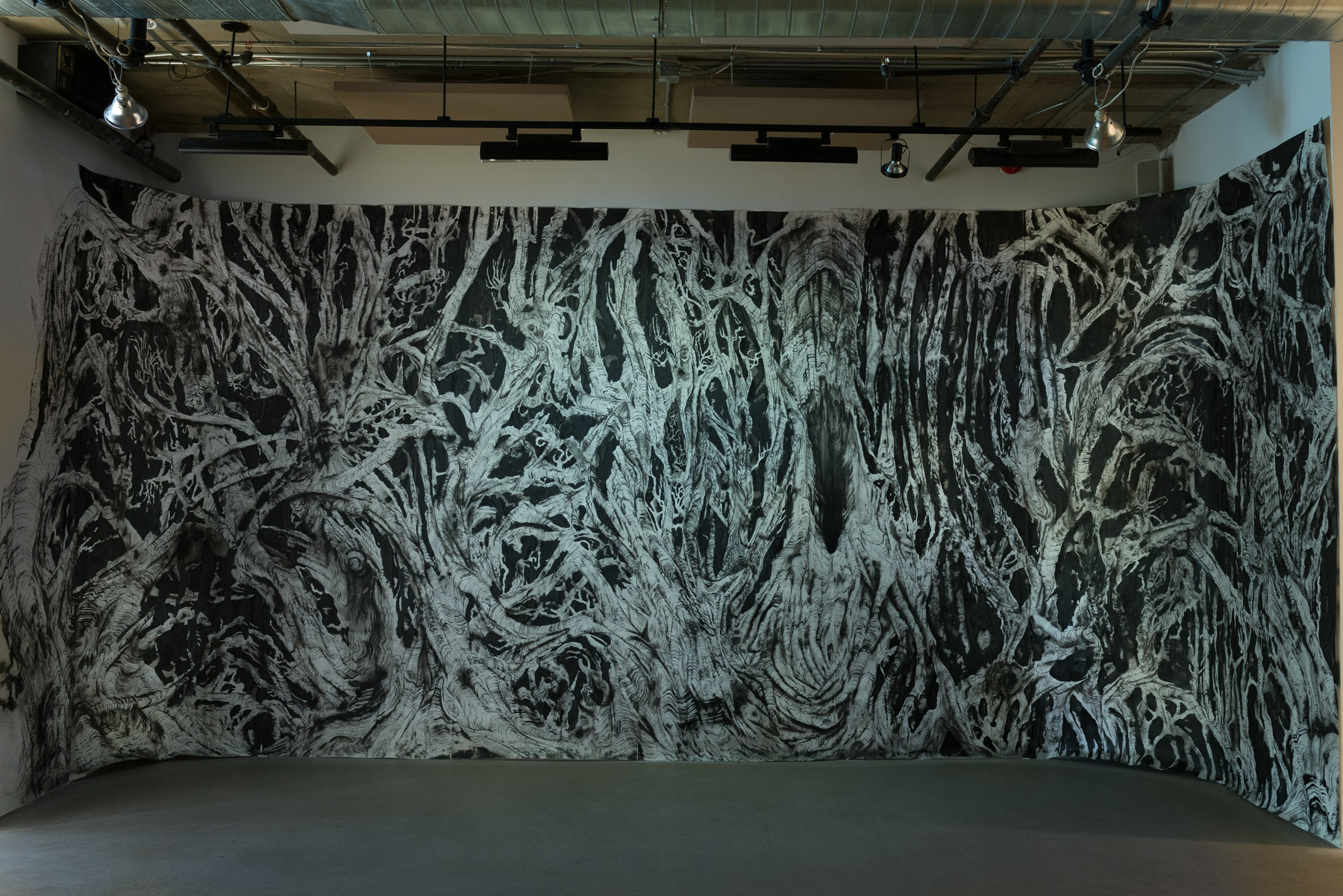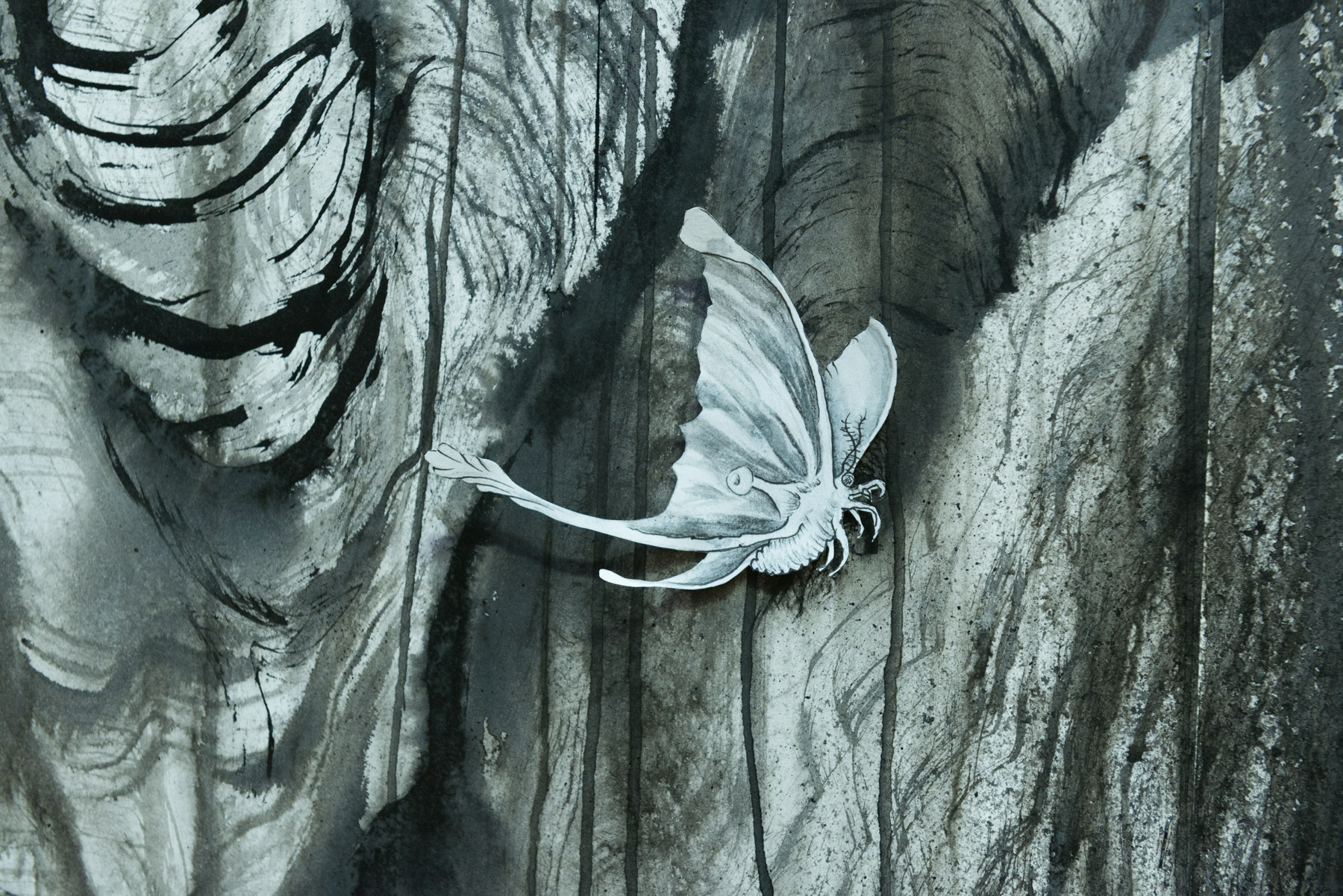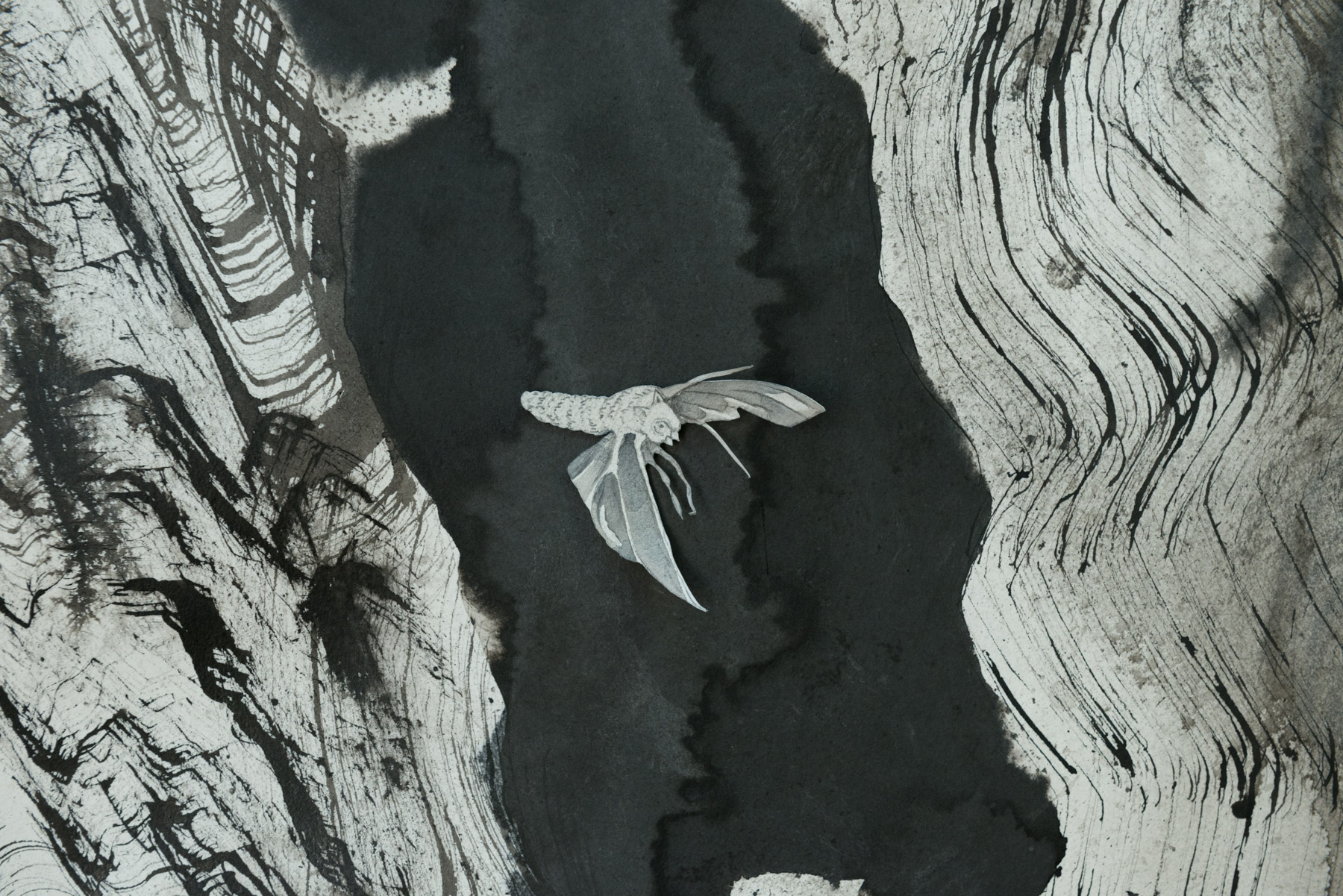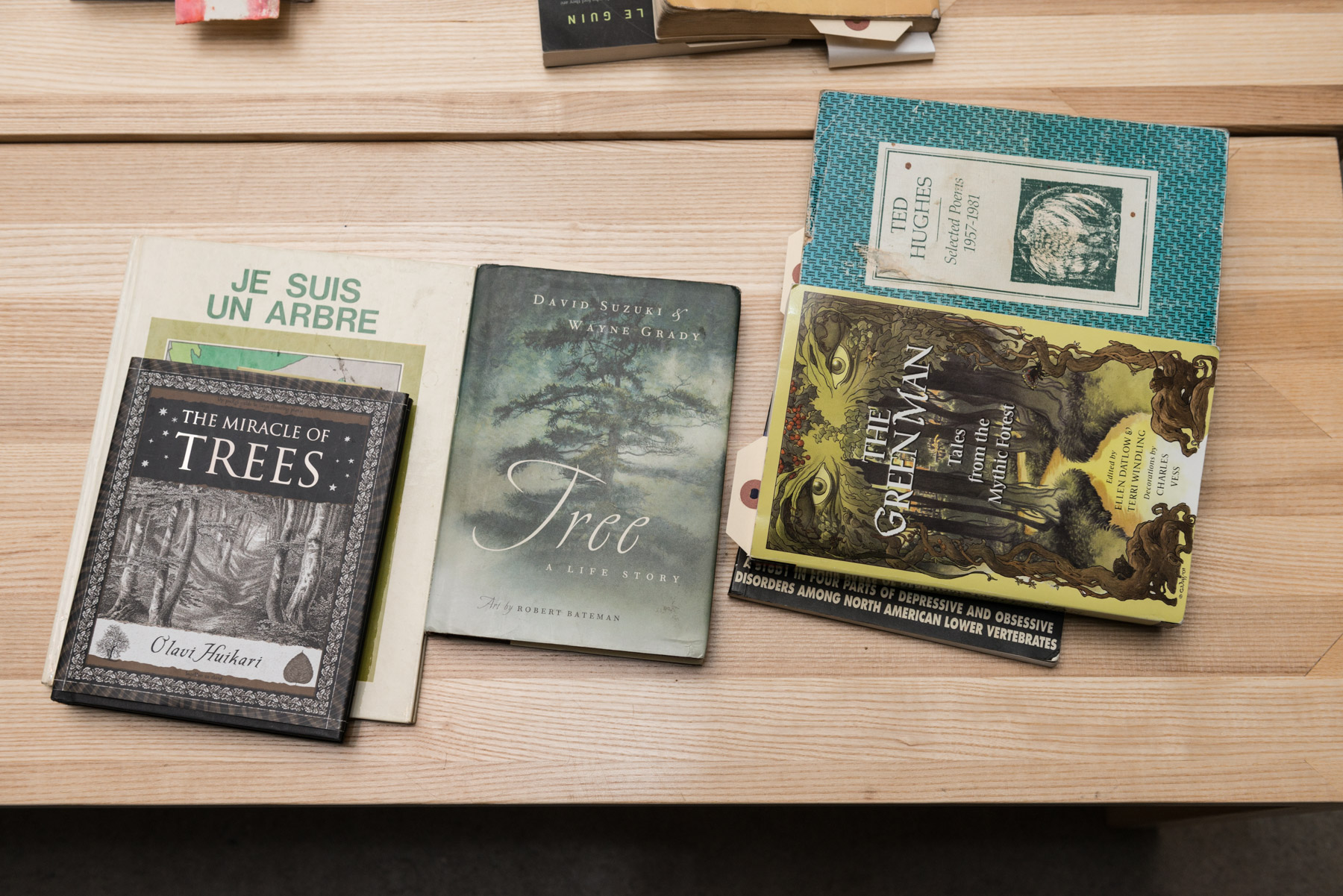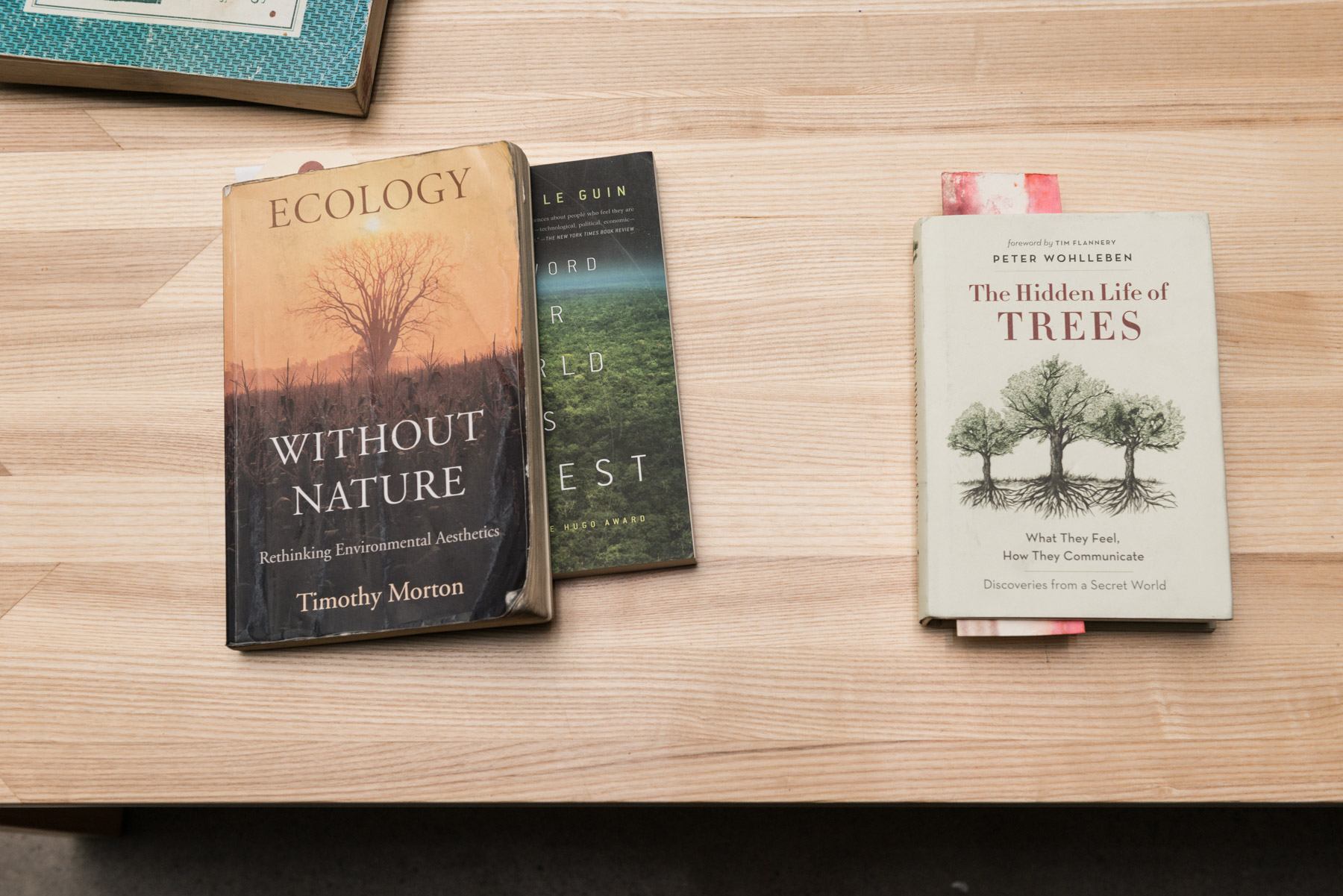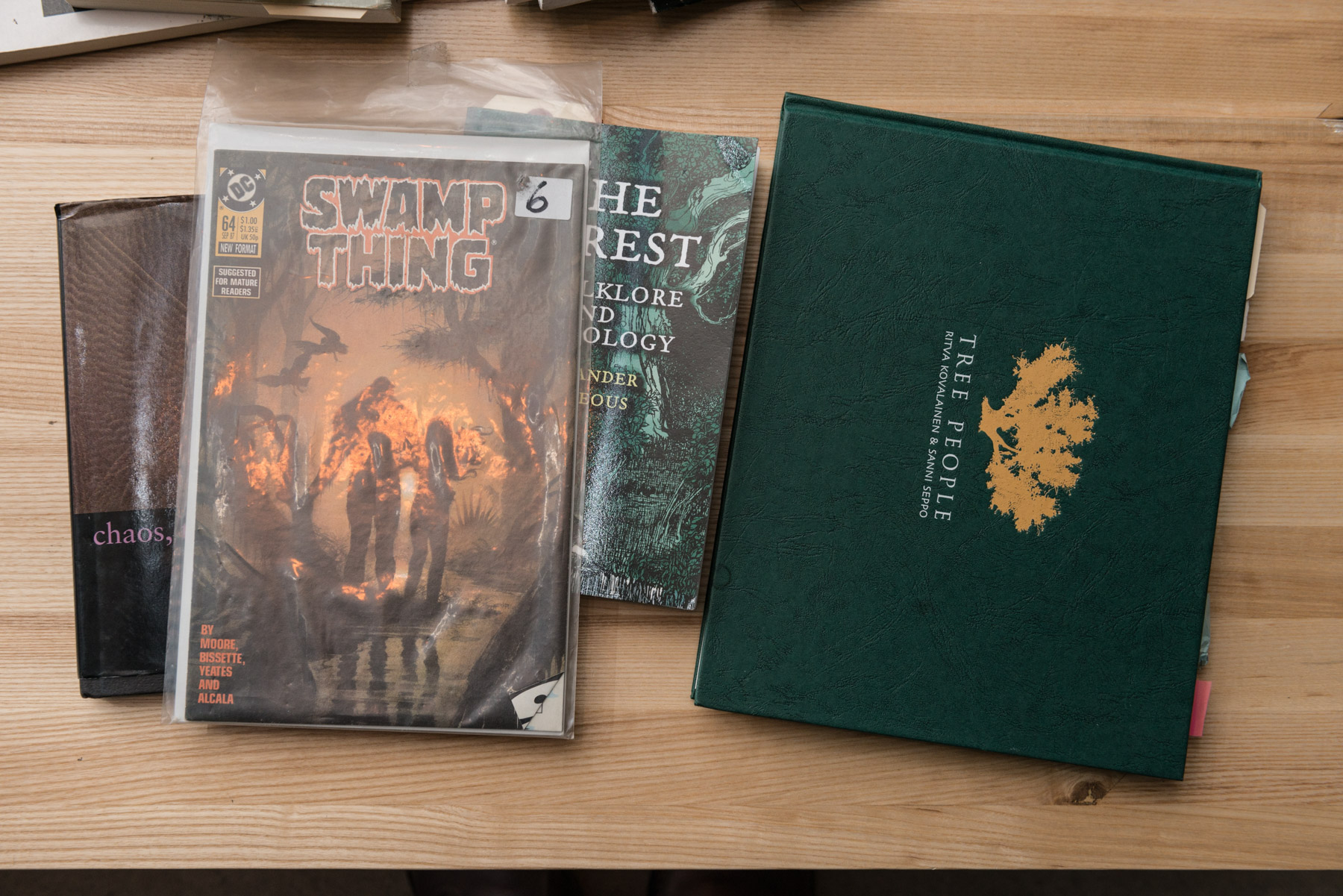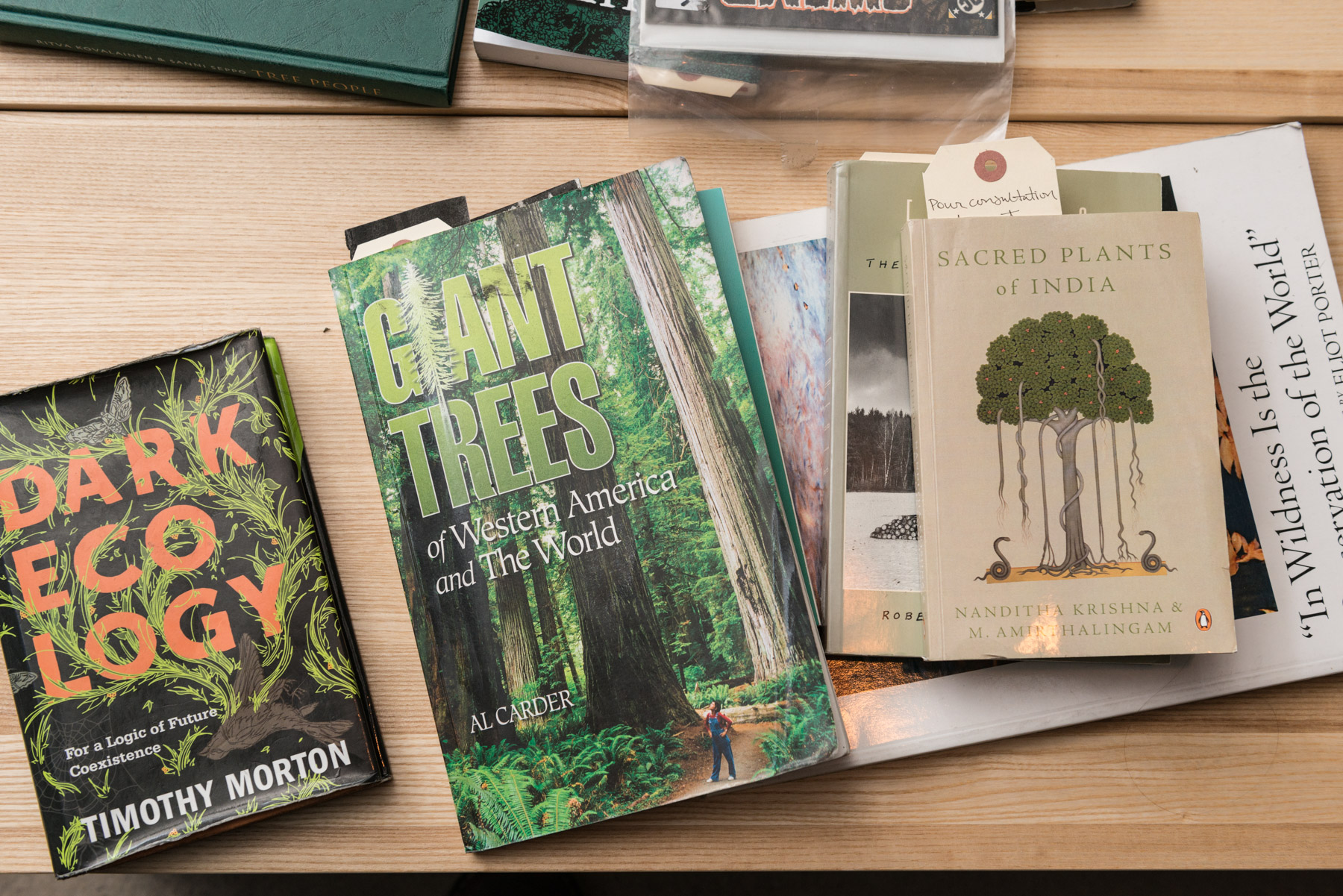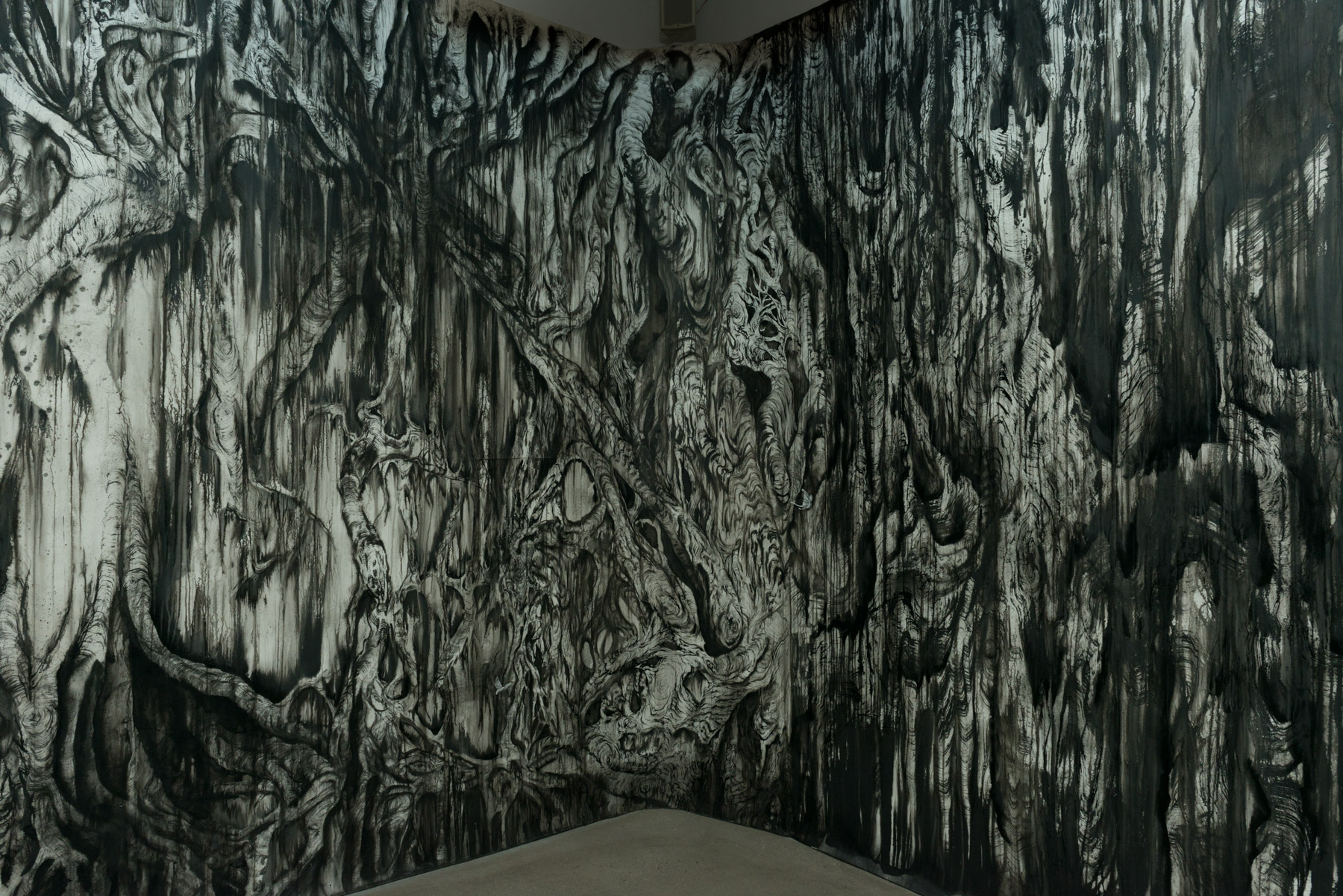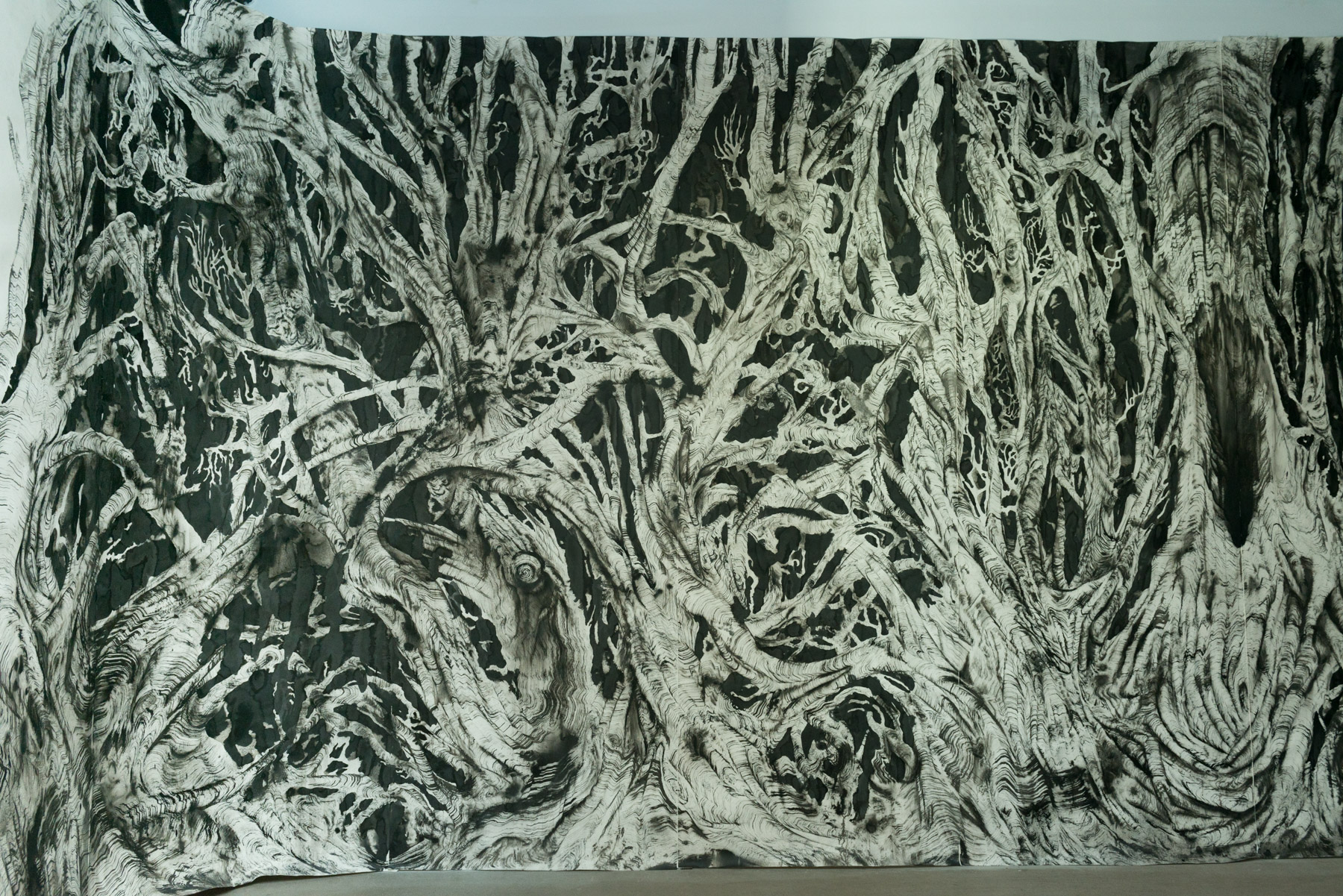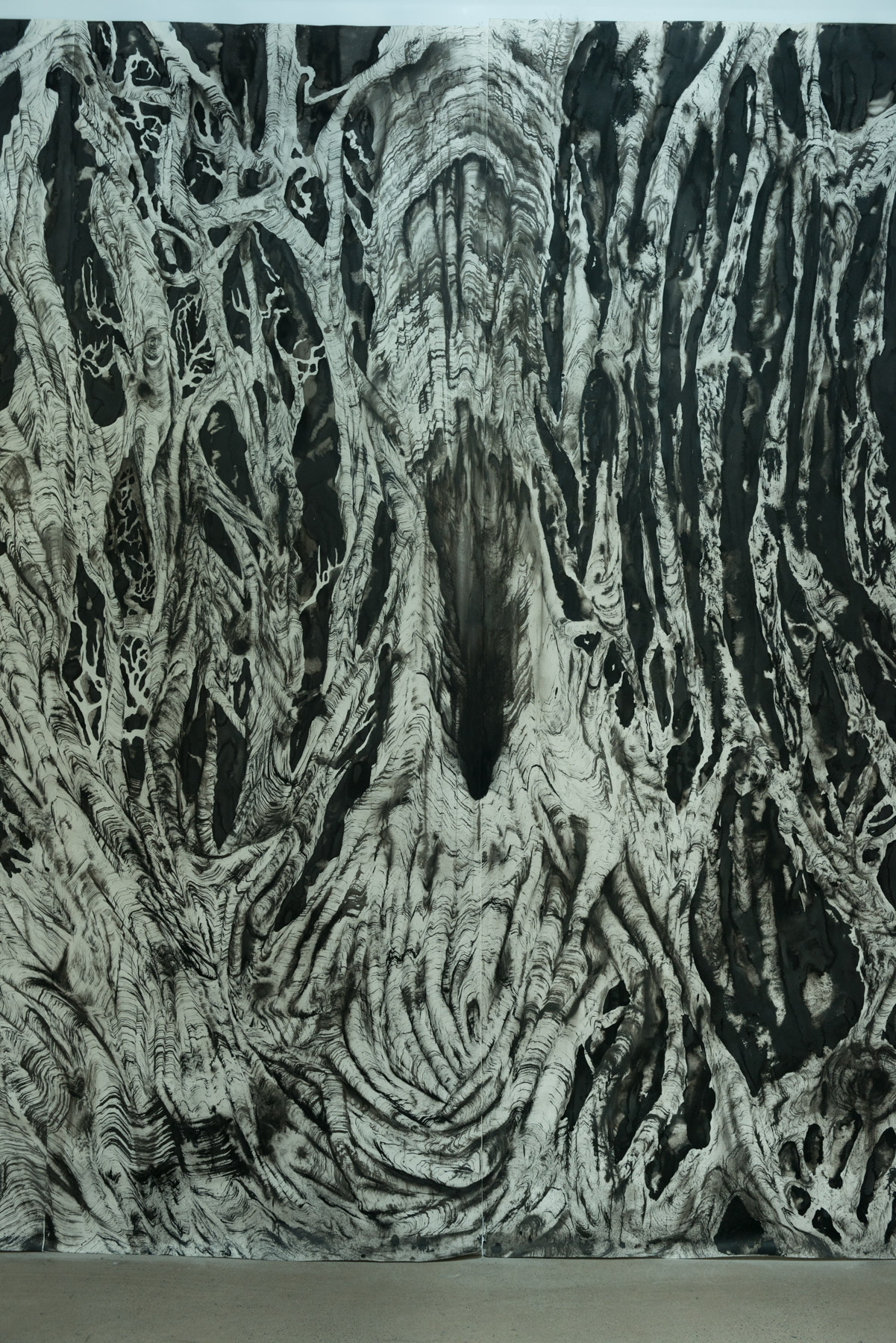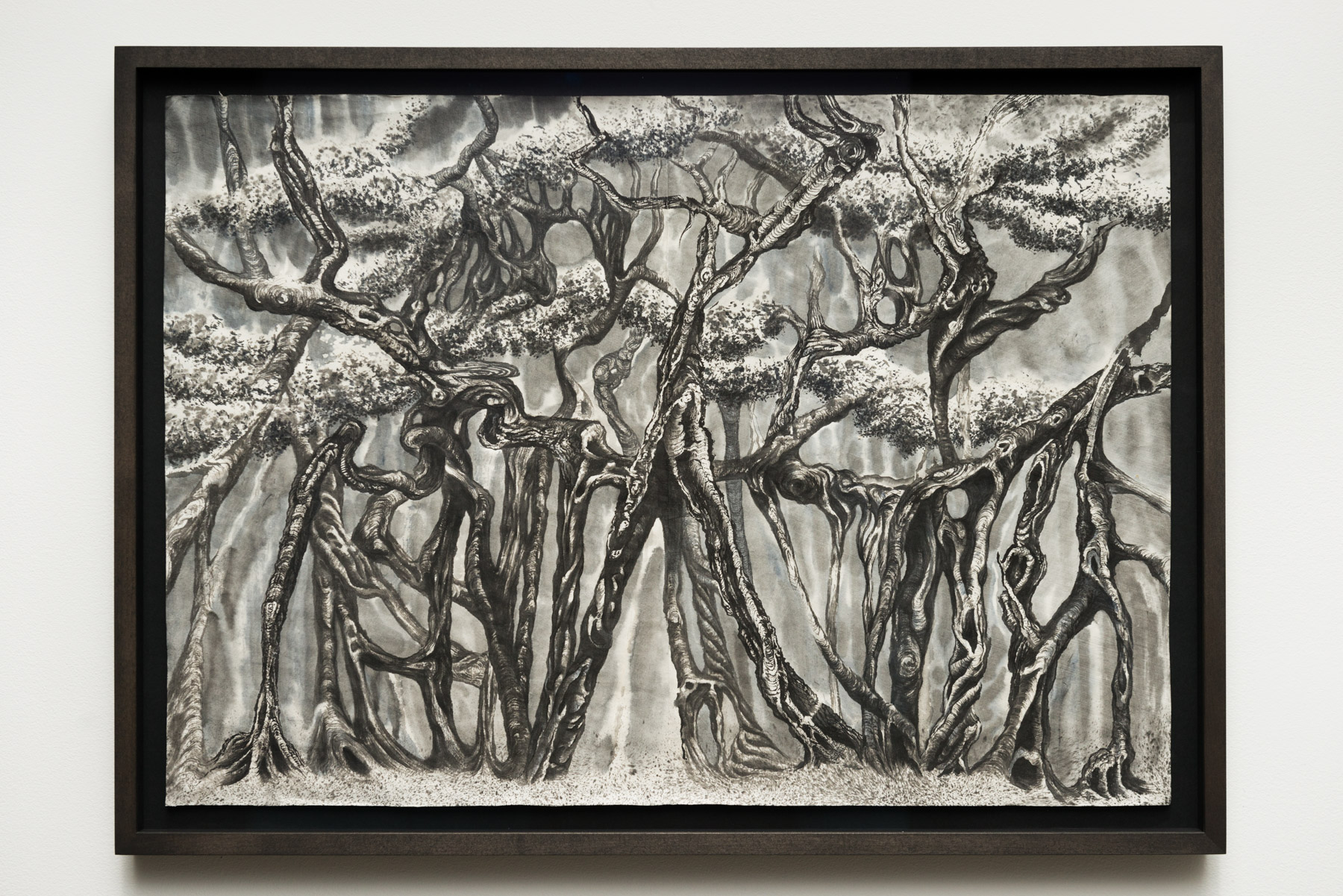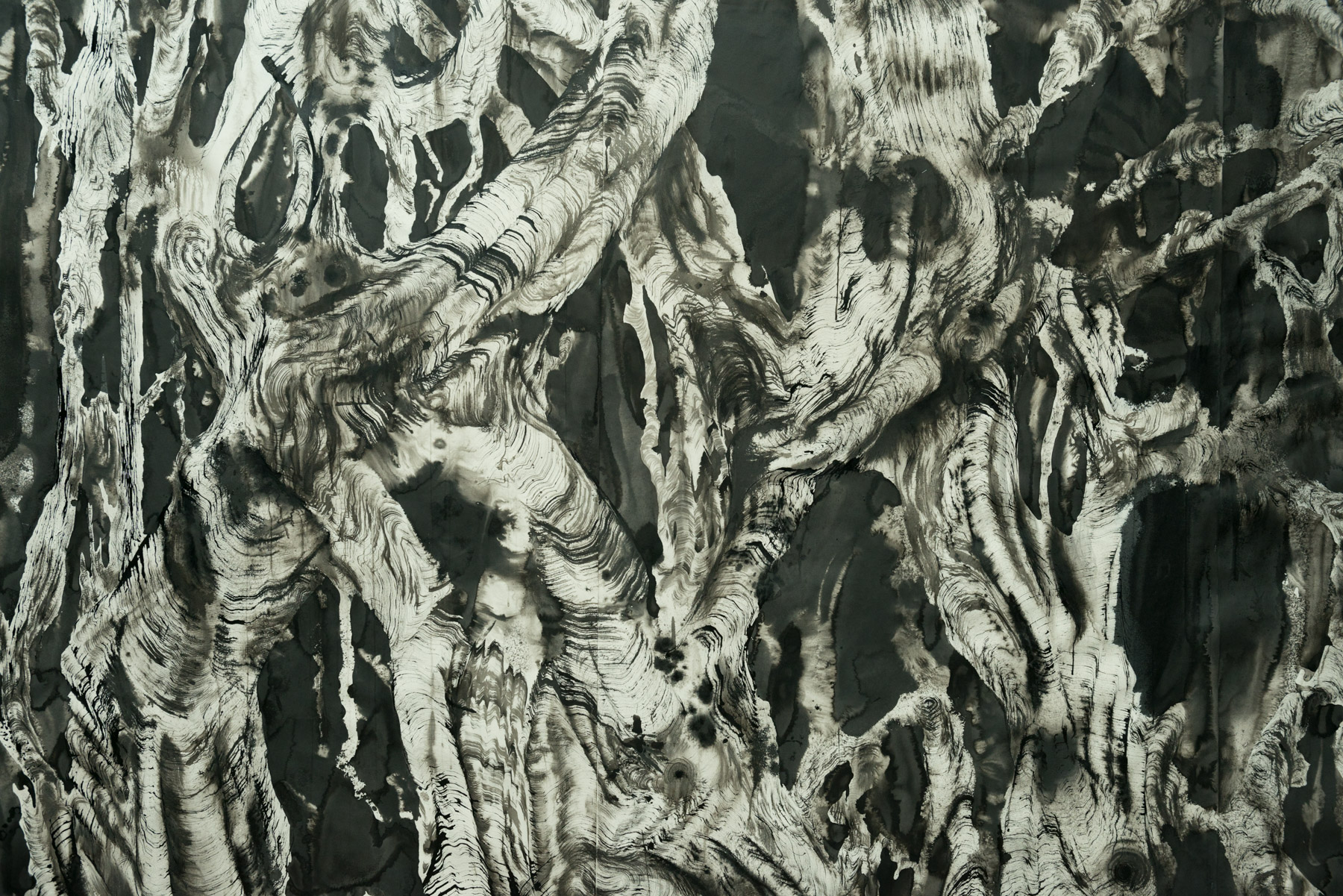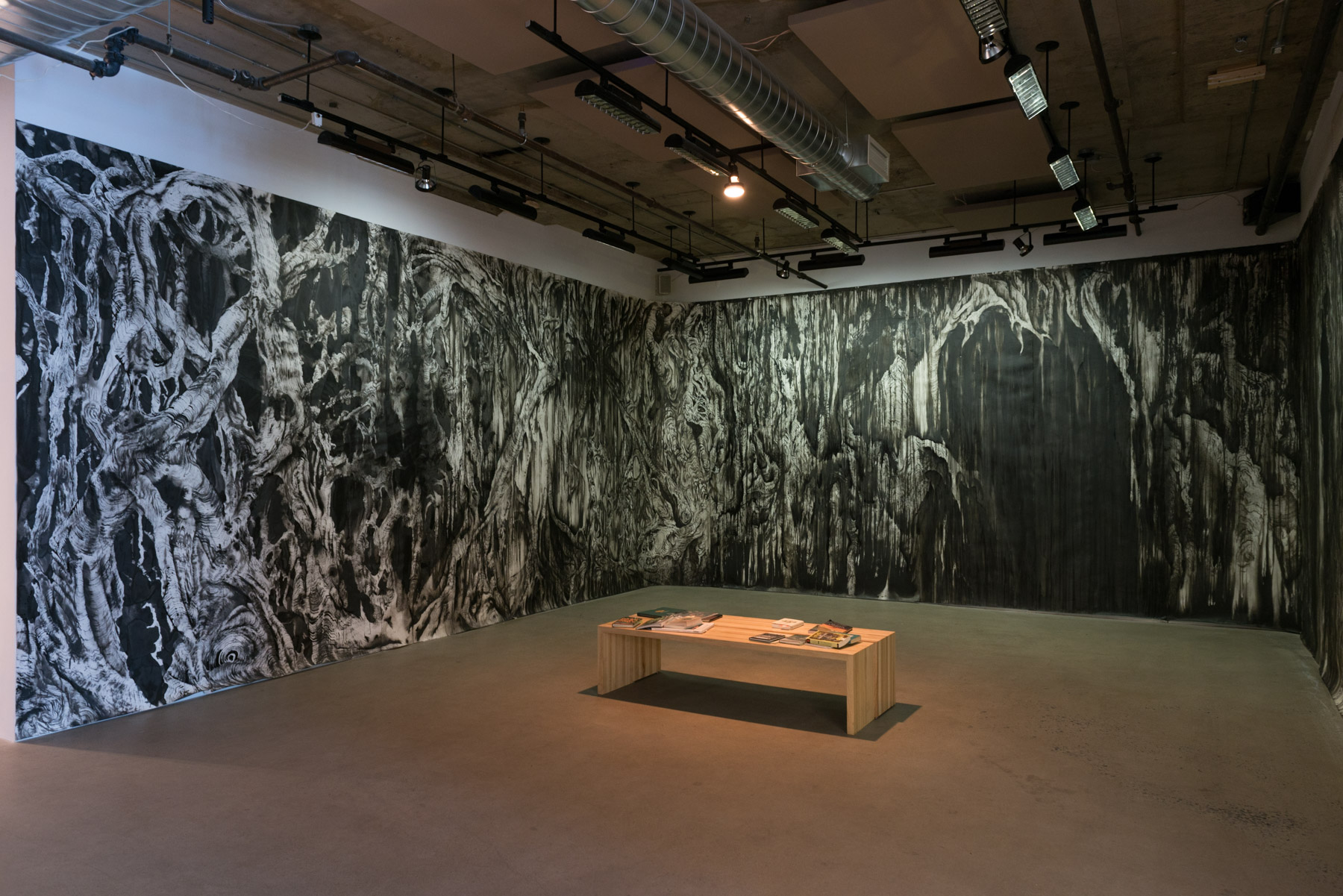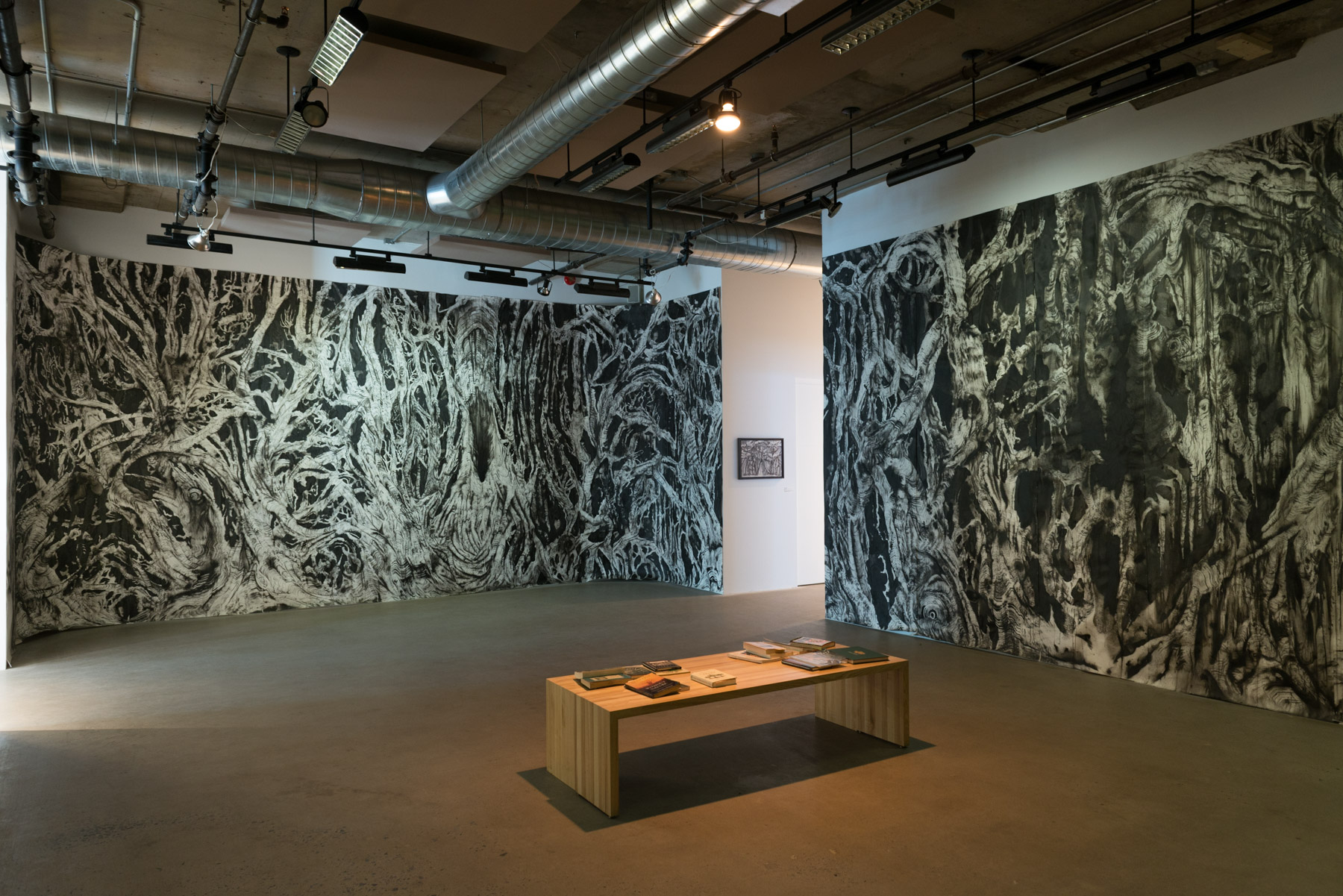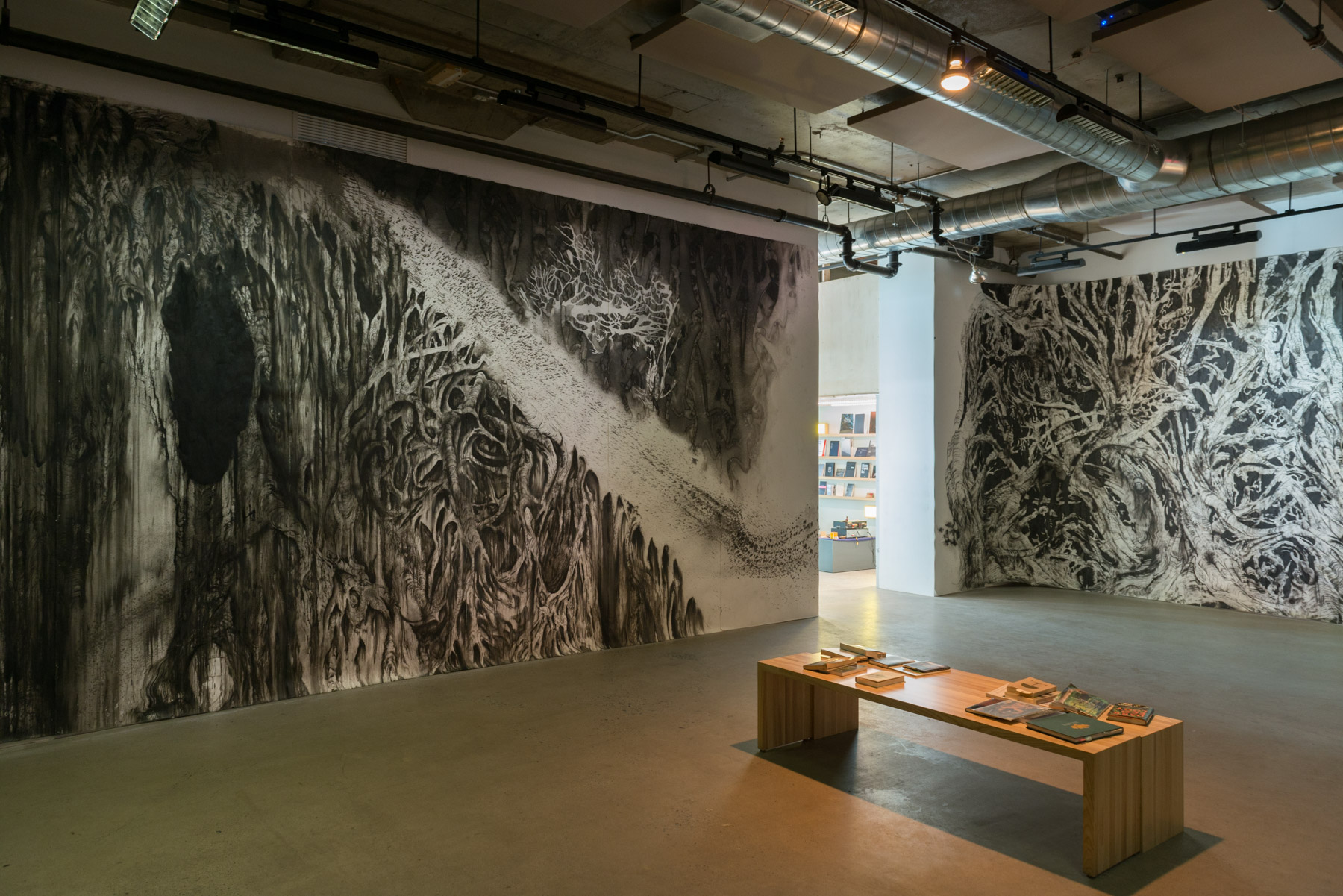(français en dessous) Following his artist residency in Mumbai (India), Jim Holyoak created The Thicket, whose title refers to tufts of vegetation or a dense growth of bushes or small trees. More specifically, the artist was inspired by the banyan fig trees that were frequent subjects for his observational drawings while in India. This tree often grows to an enormous size and in such complex ways that it can actually look like a forest itself. The banyan tree has the unusual characteristic of creating its own architecture through aerial roots that stem from its trunk and tangle with each other, forming a vast network of interconnected lines that reach downward from above.
The Thicket picks up on the rhizomatous network of the banyan, with its intertwined vines, roots, branches, and various articulations resembling our own bodily joints, like wooden knees, elbows and fingers. The artist has created a swampy, phantasmagorical woodland space that seems to stretch, dissolve and grow all at once. At CLARK, this abstract and graphic representation of banyans takes the form of an imposing drawing measuring 30.5 metres (100 feet)1, covering the entire perimeter of the gallery’s wall space. This complete occupation of the gallery creates an immersive environment where finding the drawing’s beginning or end becomes impossible, where there is no optimal viewpoint, and where the work cannot be taken in all at once. Rather, the viewer must navigate through a labyrinth of lines, whether standing at a distance for a topographic perspective, or up close for a microscopic one.
The Thicket demands that we pause, slow down and take a moment to fully experience the immersive nature of the work. In addition, a total environment is created through dimmed lights and an environmental soundscape composed by Nick Kuepfer, whose own practice involves research into acoustic ecology. Kuepfer’s ambient sound work evokes a deep space through modified and layered field recordings of crickets, dripping water and rustling leaves, lending a contemplative, enveloping effect to the installation.
Through this piece, Jim Holyoak attempts to dismantle the nature/culture paradigm by addressing the general ecology of the forest, whether it be mythical, scientific, or anything in between.
– Manon Tourigny
/
C’est à la suite d’une résidence à Mumbai (Inde) que l’artiste Jim Holyoak a conçu The Thicket, dont le titre réfère à des touffes de végétation ou d’arbres serrés les uns contre les autres. Plus spécifiquement, l’artiste puise son inspiration des figuiers banians, ces derniers souvent utilisés comme sujet de dessin d’observation lors de son séjour en Inde. Cet arbre atteint parfois une taille énorme et se déploie de manière si complexe qu’il donne l’impression d’être une forêt à lui seul. Le figuier banian a pour particularité de créer sa propre architecture à travers un tronc dont les racines aériennes s’entremêlent les unes aux autres, créant alors un vaste réseau de lignes qui partent du ciel vers le sol.
Ainsi, The Thicket reprend le réseau rhizomatique du banian, dont les vignes, racines et branches entrelacées, ainsi que leurs articulations, rappellent des jointures corporelles comme des genoux, des coudes et des doigts de bois. L’artiste crée ici un espace sylvestre marécageux et fantasmagorique qui semble s’étirer, se dissoudre, grandir et couler simultanément. À CLARK, cette représentation abstraite et graphique des banians prend la forme d’un imposant dessin de 30,48 mètres (100 pieds)3, soit la totalité du périmètre disponible dans la salle d’exposition. Cette occupation maximale de la salle permet de créer un environnement immersif où il est impossible de trouver le début ou la fin du dessin, où aucun point de vue n’est optimal ou suggéré, où l’œuvre ne peut être saisie d’un seul coup d’œil. Le regard du spectateur doit plutôt naviguer à travers le labyrinthe de lignes, qu’il soit physiquement éloigné du mur ou rapproché, passant ainsi du topographique au microscopique.
The Thicket demande un temps de pause, un moment au ralenti, pour vivre pleinement cette immersion. Ceci est appuyé par un éclairage minimal, ainsi que par un environnement sonore composé par Nick Kuepfer, celui-ci menant dans son propre travail une recherche sur l’écologie acoustique. Son œuvre sonore ambiante suggère une profondeur spatiale, modifiant et accumulant des enregistrements effectués sur le terrain de criquets, de gouttes d’eau et de bruissements de feuilles. Avec cette trame sonore, l’artiste accentue l’effet enveloppant et contemplatif de l’installation.
À travers cette installation, Jim Holyoak tente de démanteler le paradigme entre nature et culture, en adressant l’écologie générale de la forêt, qu’elle soit mythique, scientifique et tout ce que l’on trouve entre les deux. – Manon Tourigny
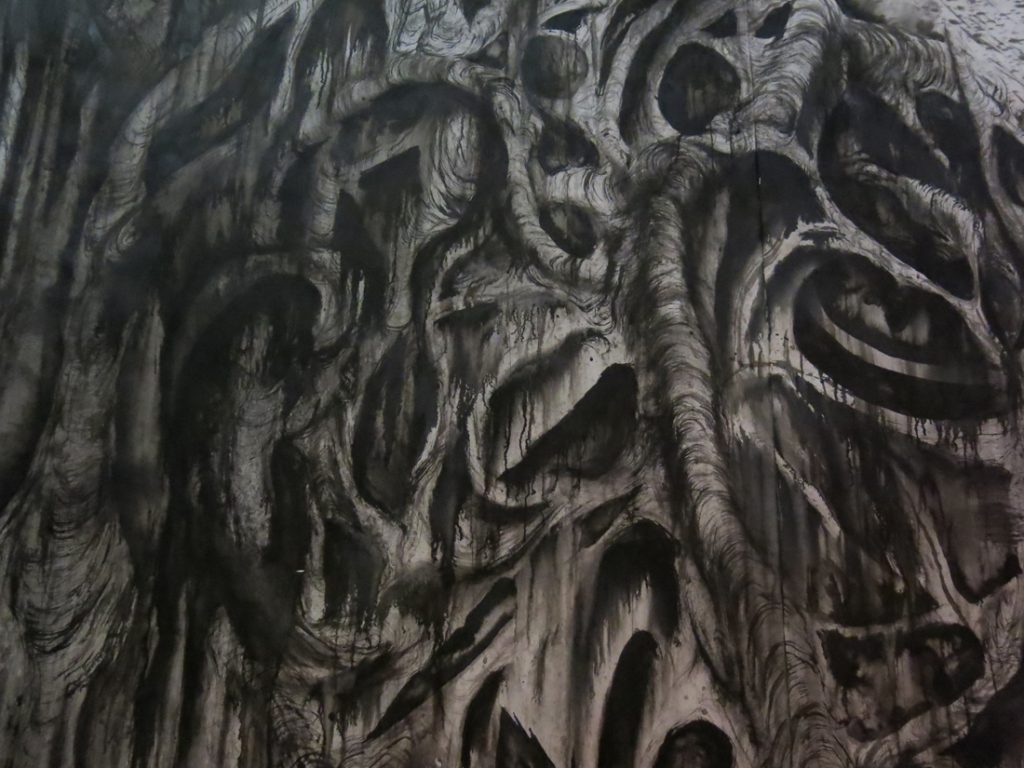 photo credit Paul Litherland
photo credit Paul Litherland
